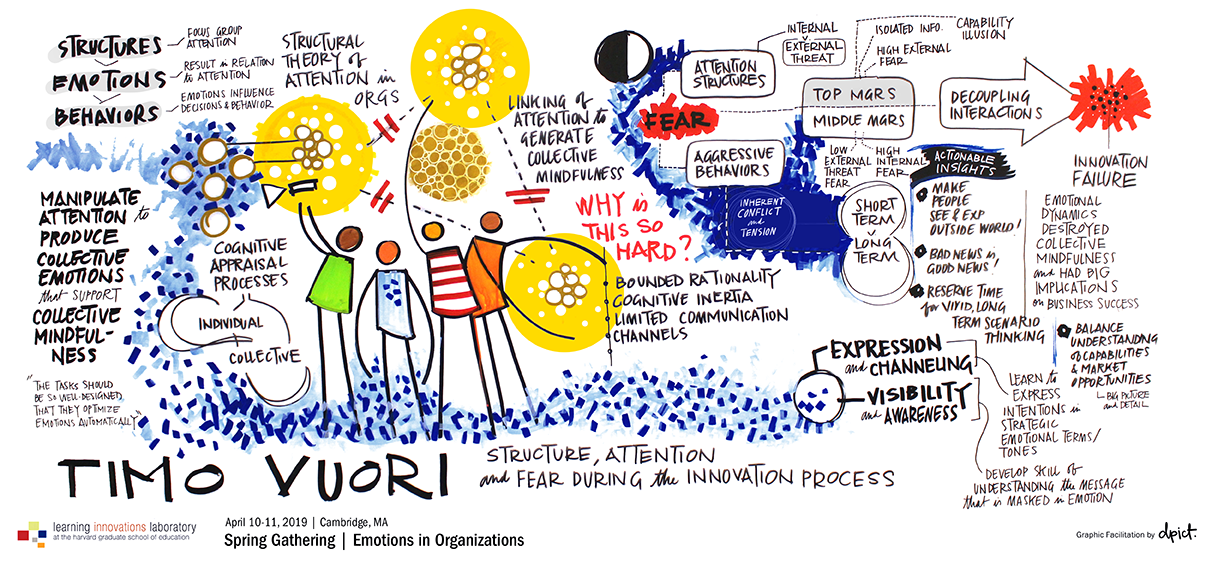
Timo Vuori, of Aalto University Finland, shared his research on how organizations structure attention and emotions. Traditionally organizations structure attention in distributed ways. Different roles pay attention to different things. And then organizations create structures and practices to share information in hopes to support collective awareness and actions. But this is challenging for several reasons. We have bounded rationality, cognitive inertia, limited communication channels, and different personal and political incentives. But Timo’s work explores additional emotional factors that contribute to the challenge.
For five years he did research in Nokia during the period in which the iPhone and Android were introduced and Nokia essentially collapsed. What he found was the attention structures and aggressive behaviors influenced the top and middle manager fears. Top management knew about the external environment, that the iPhone and Andriod were being released. The top managers feared the external change, shouting and throwing tantrums. This was seen as an extinction level event. However, the middle managers were looking at what the top managers demands: get more phones released in timelines. They feared punishment from top managers and felt silenced, but weren’t fearful of the external environment. So as Nokia tried to innovate and produce new software to produce new phones, the emotional dynamics were stifling the knowledge sharing and risk taking necessary in innovation. Nokia very quickly went from being the dominant player to being a dying dinosaur in the market.
Timo argues that there is an important difference to “structurally based fear” that structured the focus of attention of different groups. Some actionable insights from this are that, in the face of change that elicits emotions:
- Make people see and experience the world. Nokia forbade people to use iPhones or even Mac computers. So their employees had no direct experiences with their competition.
- Bad news is good news. Share news freely as a way to motivate, don’t suppress it.
- Reserve time for vivid, long-term scenario thinking. Nokia crowded out time by asking employees to do more, not step back and rethink the possibilities.
An interesting puzzle that Timo raised is “explicit vs. implicit”: To what degree to we name emotions in the workplace versus design structures that can attend to them and support them? For example, a Help Desk is a structure that attends to emotions (e.g. fear, confusion, etc.) without explicitly naming that emotional state.

Add a comment